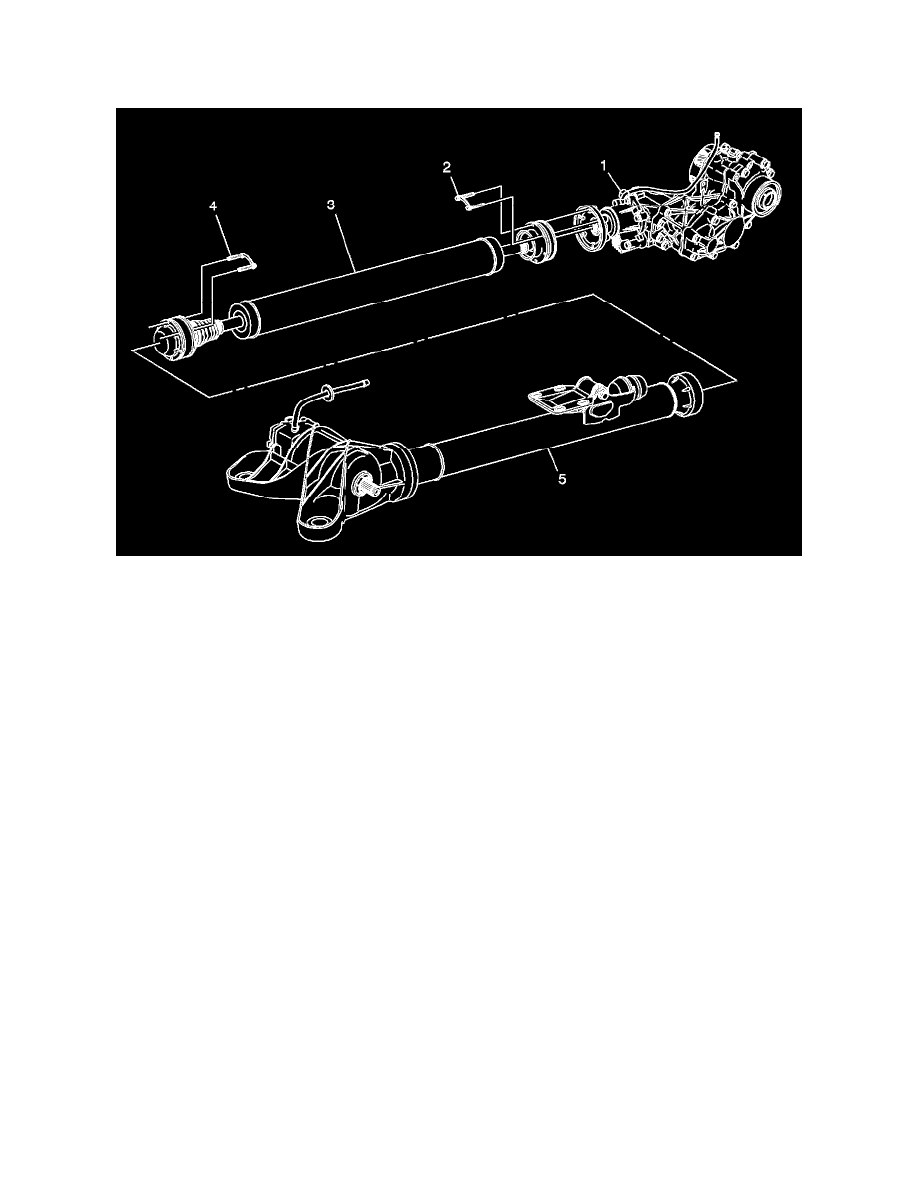Uplander AWD V6-3.5L VIN 8 (2005)

Drive/Propeller Shaft: Description and Operation
Propeller Shaft Description and Operation
The propeller shaft (3) is of a tubular design with constant velocity joints at both the transfer case and the torque tube flanges. The forward and
rearward ends of the propeller shaft mate to the transfer case and the torque tube flanges with 6 bolts each (2, 4) utilizing special crescent-shaped
washers to pair the bolts together in order to evenly distribute the clamping force.
The front constant velocity (CV) joint receives the rotational forces from the transfer case output flange. The front CV joint is of a ball-and-groove
design using 6 ball bearings set in a race. The CV joint allows axial, but not lateral movement of the joint in order to compensate for the driveline
inclination changes imposed by the powertrain during acceleration and deceleration. The CV joint is lubricated with a special grease that is protected
from foreign material contamination by a seal similar in design to the seal on a front wheel drive shaft. The mating surface of the CV joint is protected
by a metal cap which is crimped on to the CV joint, and captured between the CV joint and the transfer case output flange.
The rear CV joint receives the rotational forces transmitted through the propeller shaft from the front CV joint. These forces are then transferred to the
torque tube input flange. The rear CV joint is similar in design to the front CV joint, although the rear CV joint allows lateral as well as axial
movement. The lateral and axial movement of the CV joint compensates for driveline inclination changes as well as the lateral movement of the
driveline during acceleration and deceleration. The CV joint is lubricated with a special grease that is protected from foreign material contamination
by a bellows-type seal. The mating surface of the CV joint is protected by a metal cap which is crimped on to the CV joint, and captured between the
CV joint and the torque tube input flange.
The propeller shaft and the constant velocity joints are not serviceable. The CV joints and seals should be inspected periodically, whenever the vehicle
is raised for service.
